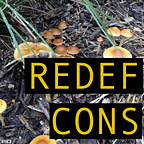Drone’s Eye View
In a post-Snowden world, flying cameras are at once terrifying and unsurprising. The real surprise might be one of their more recent uses: conservation.
Conservation drones make ecological research, environmental crime deterrence, and data collection more cost effective. The drones, or unmanned aerial vehicles (UAVs), do not carry weapons — only a camera, GPS, and other necessary tools. Plus, drone-based monitoring opens up new avenues for conservation in developing countries with limited resources.
In addition to saving money, conservation drones also save lives. 91 wildlife researchers died in the field between 1937 and 2001, according to this Wildlife Society Bulletin study. With no way to make an emergency landing over dense forests, aerial surveys can be risky for pilots and accompanying conservationists. Encounters with everything from anacondas to armed poachers are additional threats.
These benefits are well documented and widely known, perhaps at the expense of their drawbacks. Noise pollution and wildlife disturbance are potential consequences that would, ironically, harm the species conservationists are trying to protect. So far, there is mixed evidence on the ecological impacts. Because researchers are eager to participate in the drone frenzy, further research is needed as soon as possible.
The other problem is ethical use. Especially in young democracies and authoritarian regimes, concerns about abusing this technology abound. If drones intended for conservation are adapted to military purposes, then citizens’ privacy, trust, and lives are compromised. This would not only be a direct danger to communities but also and indirect threat to the conservation movement. The drone craze has the potential to take away excessive funding from other conservation priorities and perpetuate distrust between conservationists and other stakeholders.
All technologies have costs and benefits, many of which are still to be discovered. Given the extremes of each advantage and disadvantage — ranging from endangering people to saving lives — ensuring that we have the necessary research, thoughtful debate, and extensive input to allow for safe and effective drone use should be a priority.
Regardless of your opinions on conservation drones, they produce some pretty amazing videography. As you ponder the role of technology in conservation, here are some of the best clips to watch:
http://journal.amberjack.com/2015/12/majestic-drone-footage-of-alaskas-sockeye-salmon-for-science/ (Salmon in Alaska)
http://blogs.discovermagazine.com/drone360/2015/03/16/drone-footage-worlds-largest-cave/#.Vw8OZpMrIw0 (World’s largest cave)
http://petapixel.com/2015/04/28/gorgeous-aerial-drone-footage-of-antarctica/ (Antarctica)
http://www.onegreenplanet.org/news/california-drought-water-reserves/ (California water reserves)
http://www.dailymail.co.uk/travel/article-2624119/The-future-safaris-Drones-close-Kenyan-wildlife.html (Kenya safari)
*******************************************************************Originally published at redefineconservation.com. Thanks for reading!
